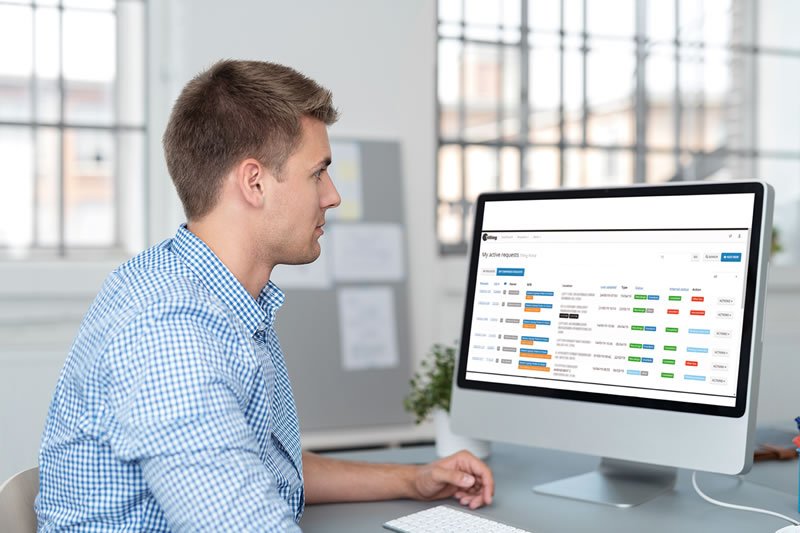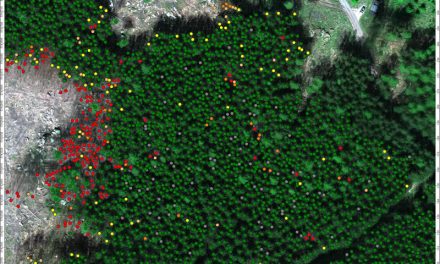When the Tilling Group began to redesign their Smart Portal, they quickly realised they had created a whole new set of tools for both their business and their customers.
Many people like to quote Thomas Hobbes’ famous aphorism ‘Knowledge is power’, but in the 21st century, it’s taken on a whole new meaning.
Competitive markets and uncertain economic times mean knowledge of your clients, the marketplace and your product can make the difference in your company’s potential for growth. Delving into that data, though, can seem an overly complex job.
However, as Tilling Group learned in a recent redesign of their web portal, many companies already have access to much more information than they know. It’s simply a question of accessing it and making use of it – and, in Tilling’s case at least, sharing it.
Realising what’s missing
One of Tilling’s most popular services is their SmartFrame Design Centre, providing a free floor and roof system design service for builders using the company’s SmartFrame engineered wood products and brackets.
“We use it as a demand generation strategy,” says Leon Quinn, national sales and marketing manager, Tilling Timber. “Because it’s free, it’s a very popular service and we have a very large amount of workflow. Three years ago, we recognised that we didn’t really have the IT infrastructure to properly manage it at that time.”
Tilling brought in an IT contractor to build the first version of the SmartFrame merchant software, and it did some things fairly well. Work flow management improved and it was easier to account for every job accurately. It helped to keep Tilling’s offer consistent and to maintain the short, reliable lead times Tilling’s customers need.
But it was apparent to the sales team that they could be doing much more. As Quinn explains: “We were busy doing thousands of designs, about 12,000 a year, which are essentially quotes. As each one finished, we’d move onto the next. We weren’t taking the time to uncover what was working and what wasn’t. So our first thought was ‘all right, let’s slow down what we’re doing on the sales side of things and really consider what’s working for our customers.”
While the design team kept going with their work helping builders and resellers secure jobs, the tech and sales teams sat down and planned their way through a total redesign of their merchant software.
Building the Smart Portal
The most obvious starting point was improving both Tilling’s and the customer’s ability to manage jobs in the design system entirely from within the one program.
From that simple change in thinking, a raft of new functions followed. Instead of tweaking the old database design, the teams re-imagined it as a tool that could help them do every part of their work more efficiently. The new Tilling SmartFrame Web Portal was born, and it very quickly became apparent that it could do a lot more than its originators had planned.
As Quinn says, “With a good design, whether it’s a beam or an IT project, if you come at it from the perspective of ‘what is the most effective way to do the central job?’, you end up with a product that also delivers a lot of bonus surprises in its functions, and that’s certainly what happened for us here.”
The portal’s central task was making it easier for merchants to track their jobs, and for both the Tilling and the merchants to see what was happening with each of those jobs, keeping the process entirely transparent.
“The new portal does this perfectly,” says Quinn. “For our customers, it means they can have a lot more control over their jobs with us. Say one of our larger resellers has 15 active jobs on the go at once. Usually our lead time is four to five days and they can log in to see who’s working on each one and what stage it’s at. But if they get a call from one of their builders who needs a more urgent response, they can ask us to re-prioritise their list to put that job at the top, and we’re happy to do that for them.”
For Tilling, the portal made it much easier to track the work being done by their global team of designers. Quinn says, “We have design experts working locally and around the world. Previously, all our information exchange was by email.
“In terms of knowing where the work was up to on each specific job, I liken it to standing beside a wall, taking a piece of paper and writing all the details on it, then wrapping it around a rock and throwing it over the wall. You hope something comes back – and it did – but we had that little control over the work flow.”
By contrast, the new Web Portal has instant access to every job undertaken by every designer. “We now can have any designer anywhere in the world opening and closing files and we can see what they’re doing, understand it, manage it, prioritise it,” says Quinn. “It means that every member of the international design team can be treated exactly the same as one who was working in the office right beside us. It was a very powerful difference.”
The change meant that it was immediately easier for Tilling to benchmark designer performance. “We can understand how quick our designers are,” Quinn says. “We can also track if there are any problems where we might need to offer training support someone, or see if another designer is particularly skilled at a specific task.
“It meant that we could enshrine a fast checking system: each job now automatically has a second designer check the first designer’s work once it’s finished and that alone meant we were able to actually lift our quality. If there had been no other benefits, to the portal that would have been enough of an improvement to make it worthwhile.”
But Tilling soon saw there were multiple additional benefits to be had.
Exploring possibilities
While investigating the success of the portal’s intended consequences, Tilling realised an enormously positive unintended consequence. Tracking each design and designer meant that they were also tracking what happened with each job. Suddenly they had instant, at-a-glance access to the conversion rates from designs to builds.
Every design done takes up company time, but only those that convert into builds bring in revenue. As Quinn says, “Effectively every design is a quote and we had just been focused on getting the quotes out. But because the portal started to record everything for us, we could see every time a design quote was converted into an order. We realised that we were able to track conversion rates by merchant customer, by merchant group, by state, by merchant rep or by builder… We can very quickly see things that are working and we can also see things that are not working.”
They had accidentally discovered the holy grail of modern business: up-to-date, accurate data, and a lot of it. The design team was thrilled to be able to benchmark their work so effectively, but the sales team recognised the treasure they had uncovered.
“We’re all about continuous improvement,” says Quinn, “and suddenly we had this platform for both us and our customers to see and understand what’s working and what’s not, and we realised that while we thought we’d been building tracking software with a database, we’d actually built a CRM.”
Customer Relationship Management (CRM) software packages are sales tools that use data analysis to drive growth. While a lot of excellent not-too-expensive models are on the market, the Tilling tech team had created an ideal one for their customer base as a by-product. And, in true Tilling style, they didn’t keep it to themselves.
“We’d built the portal with the customer in mind, so it made sense to us that we let each customer have their own CRM,” Quinn says. “They can look at every quotation they’ve done with us and understand which ones turned into orders and which ones didn’t. Imagine you were a sales manager working for a large merchant group, you might have 10 reps. Our designs can work as a benchmark so they can look at their team and see who’s highly engaged, who’s middle of the road and who’s not in the space of the product segment.
“They don’t need to do anything extra to get this sales feedback, they can just use the data we give them for free.”
Even gaining access to the Web Portal is easy. Every Tilling customer (effectively every timber merchant in Australia) can apply in minutes through the website and every merchant and builder who has previously used the Tilling Design Centre will find their data already in the portal.
Changing business
The SmartFrame Web Portal is a sign of how business is changing. While Tilling will continue to innovate with their SmartFrame range, product enhancements alone are not going to drive business growth.
“We think that in the next 10 years, the greatest innovations in our area are most likely to be information and service based rather than product based,” Quinn says. “In the near term, we find that our ability to enhance service with the latest technology is definitely the greatest opportunity we have to load more value into our offer.”
In addition to the Web Portal, Tilling has recently relaunched the SmartFrame app, a tool that allows merchants and builders to design individual beams wherever they are, including on site.
“Whether it’s a rafter, a lintel, a bearer or a floor joist, it allows you to do an on-the-spot design,” says Quinn. “You just put in what the criteria are – span, load, the wind zone – and it will give you the result you need. It also has a feature where you can design holes into our I-joists as well.
Previously available as a native app, the redesign is now web-based, which means it will no longer be disrupted each time a new Apple iOS is pushed out. “It also means it’s now very easy to update,” Quinn explains. “If we find any issue or get any requests for additions from our customers, we can quickly update it and then the next time somebody opens the app, it downloads the latest update. And, of course, the app is great on Android phones, too.”
As with the Web Portal, the app centres the needs of customers, including a service that allows you to find the nearest stockist of a particular beam from any work site, making even the most on-the-fly change one that won’t compromise the quality of the end product or slow the build.
Also as with the portal, data is a key tool, here. The specifications listed within the app deliver instant value for the users.
“If a building inspector comes onto your site and asks for information – say, ‘How can you justify that beam?’ – you can in two minutes put in the design criteria for that beam, justify your choice, and email a certificate with the engineering details directly to the inspector. It’s quite quick, easy and straightforward.”
Managing the future
Tilling has been quick to realise the potential of data-driven models. Despite timber and building often being somewhat traditional industries, the ease of the portal and app for end-users and the quality as well as quantity of information available is helping to drive take-up of the tools with the customer base.
As Quinn explains, they deliver exactly the same things as traditional management metrics. “The number one word that comes out of the portal is ‘accountability’” he says. “We want to be accountable for our actions and our performance, and we want every design that we do to maximise opportunity for us and our customers and really ensure we’re all working together as a supply channel – both as the wholesale distributor and the reseller – to maximise outcomes.”
This collaborative approach is even more important in the current contracting market, where resellers and builders might find themselves with 10-15% less opportunity.
“We want to ensure none of us waste the opportunities we have,” Quinn says. “If Australians aren’t physically building the same number of homes, we can at least make sure that our conversion rates, and our resellers’ conversion rates are higher. And that will compensate, so we can all maintain revenue in a tighter market.”
Making user information fully accessible to those customers within the massive Tilling database means that at every stage of the process, all parts of the supply chain can see how they are performing and spot any areas that could be strengthened.
The entire data set is also analysed by Tilling for broader trends which are shared with customers. Quinn says, “We can see trends like the average size of homes getting smaller, because we can see that for the average floor system, the dollar value is dropping. Those trends in scale show up on the composite data.”
For Quinn, the portal is indicative of Tilling’s us and us approach, where lines aren’t drawn between the company and customers. “If we can all better manage information and really make sure everybody gives it their best effort, from the designer to the administrator or the Tilling rep or the reseller rep… If we’re all accountable to one another as a team, then our cut of the market will improve because our sales method will improve,” he says.
For more, visit www.tilling.com.au/merchants to learn about or join the Smart Portal, or search for the SmartFrame app in your Apple or Android app store.












